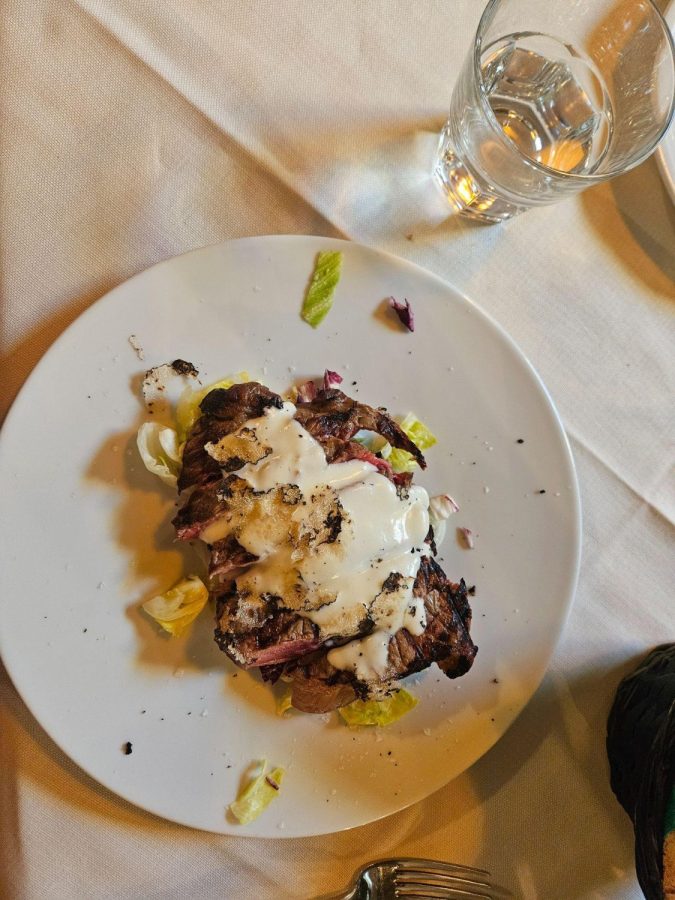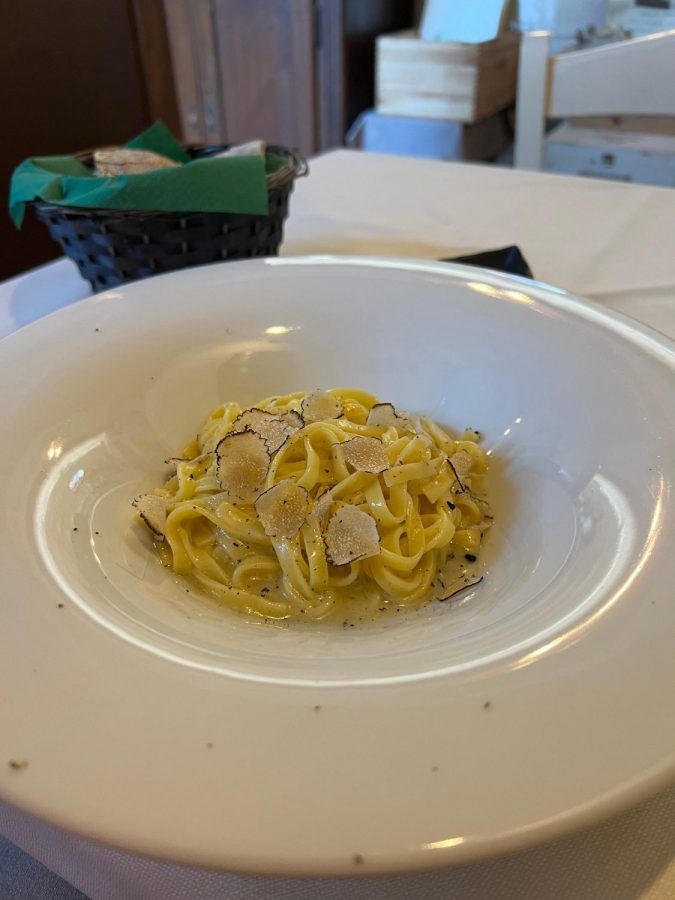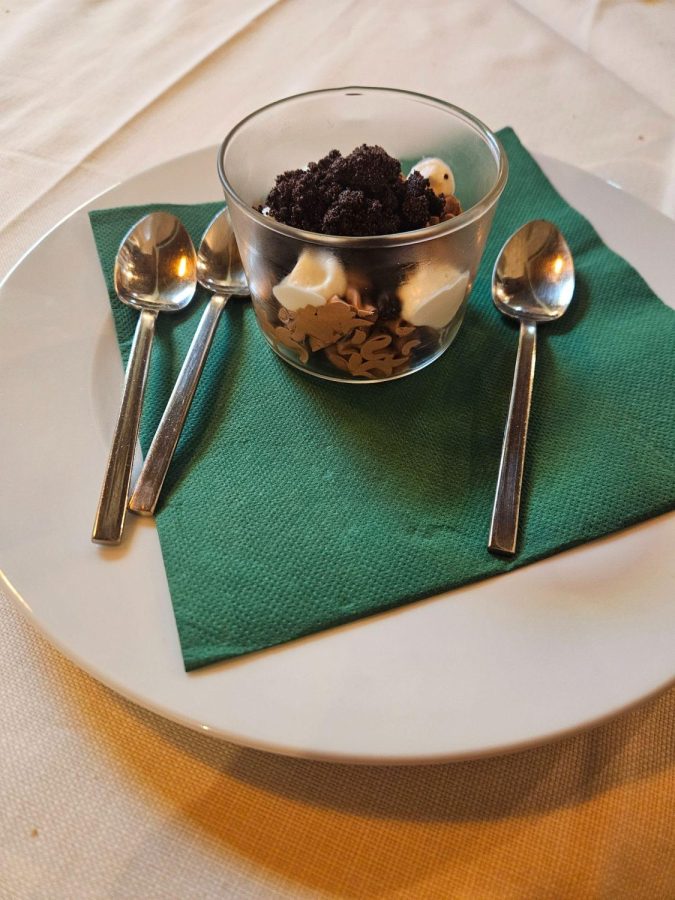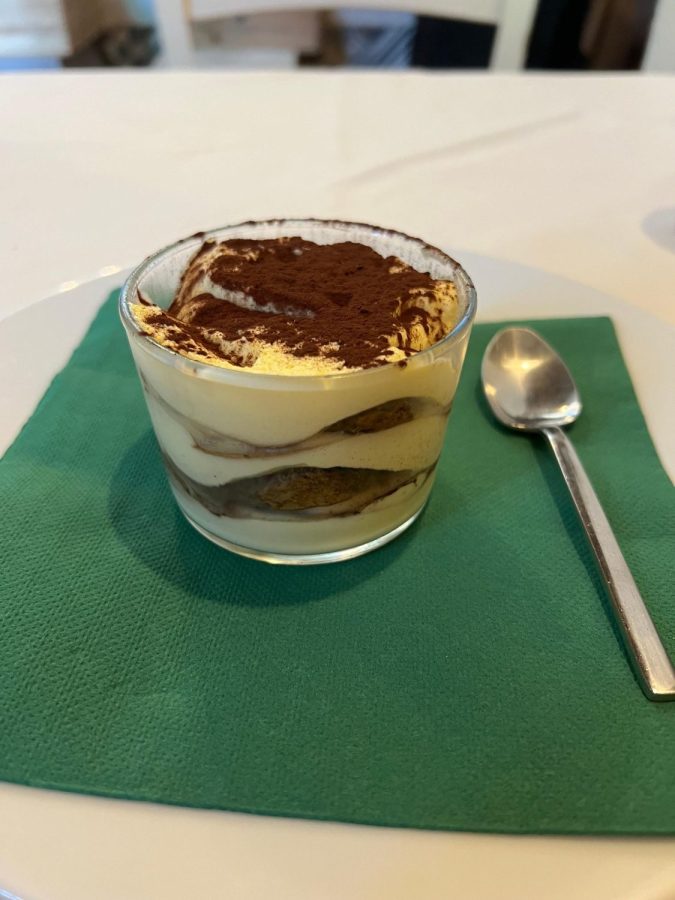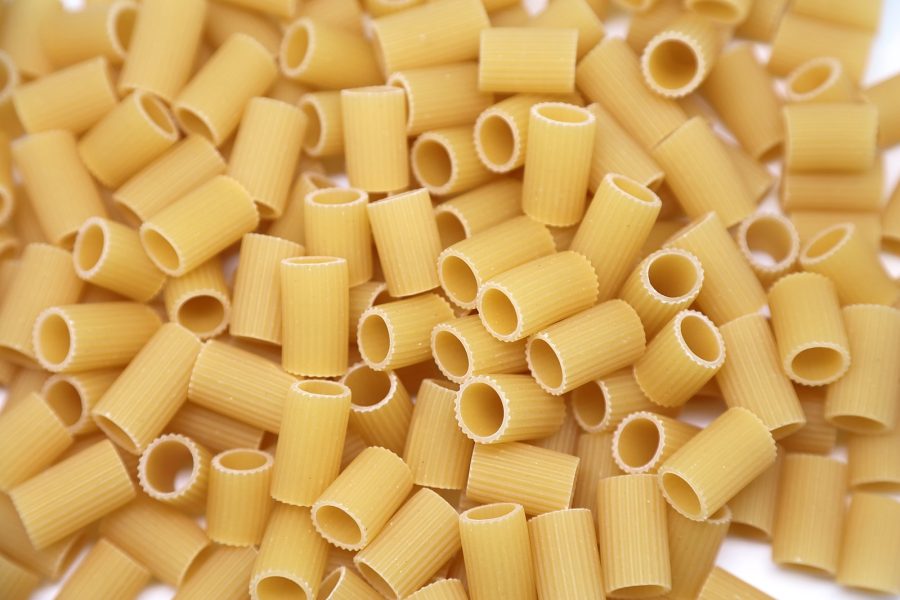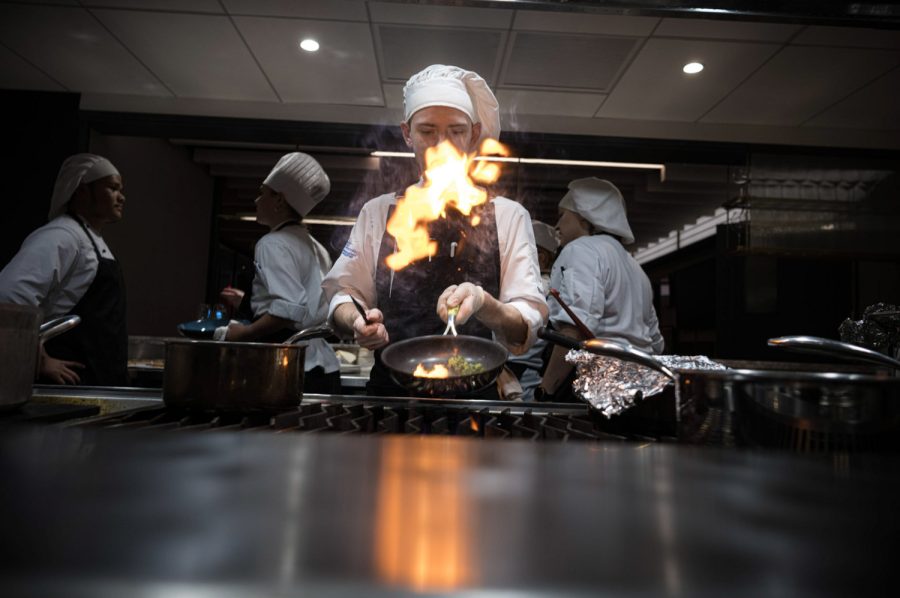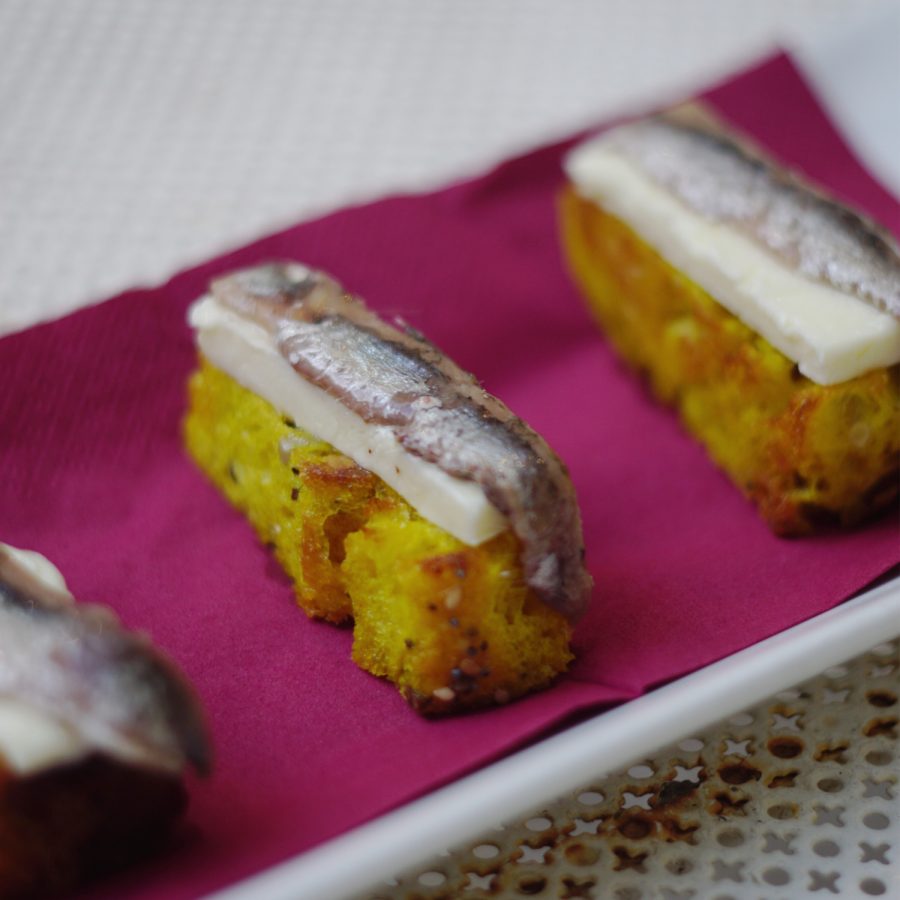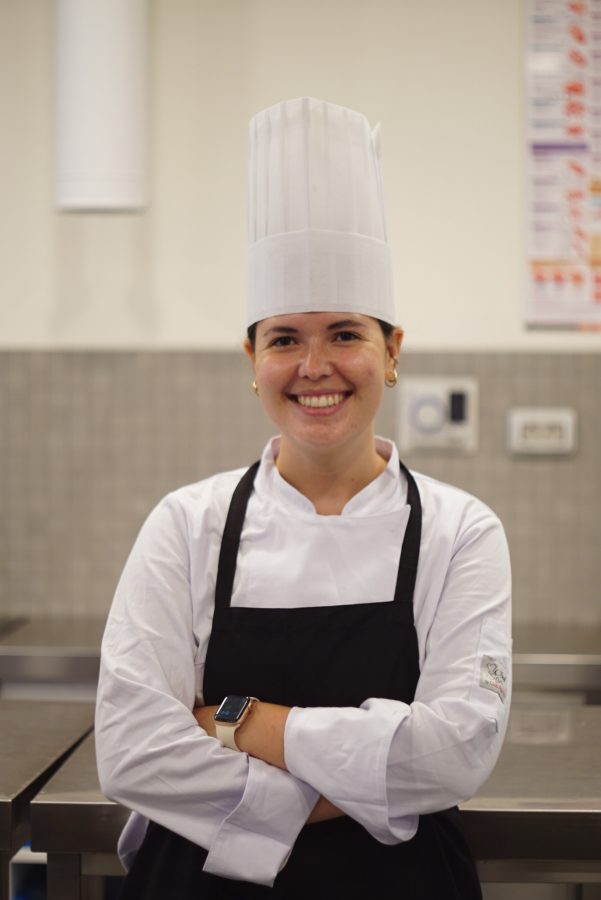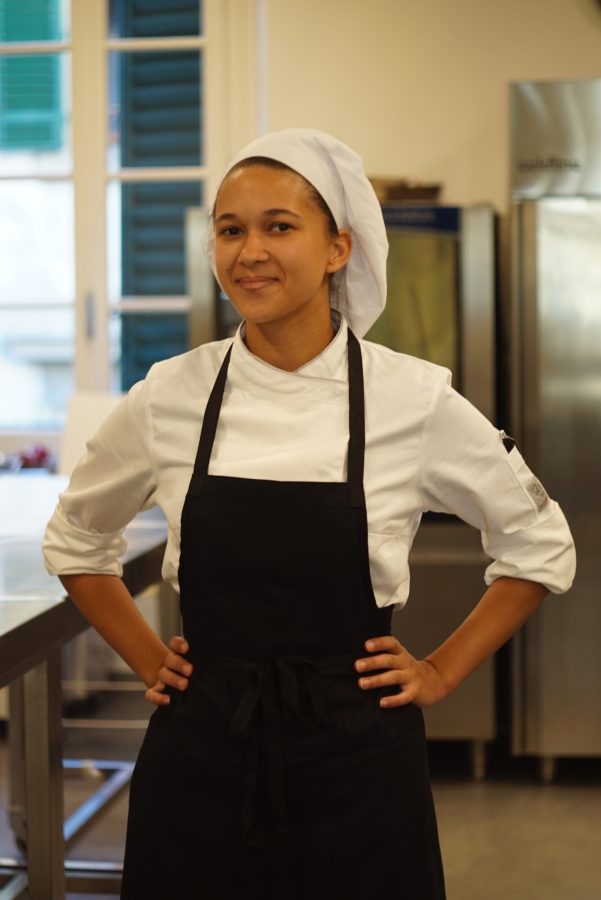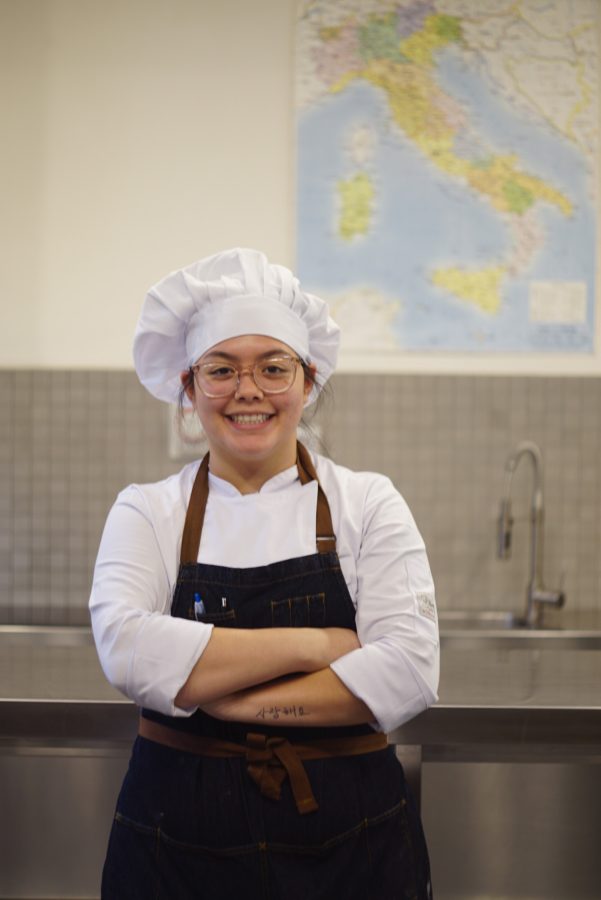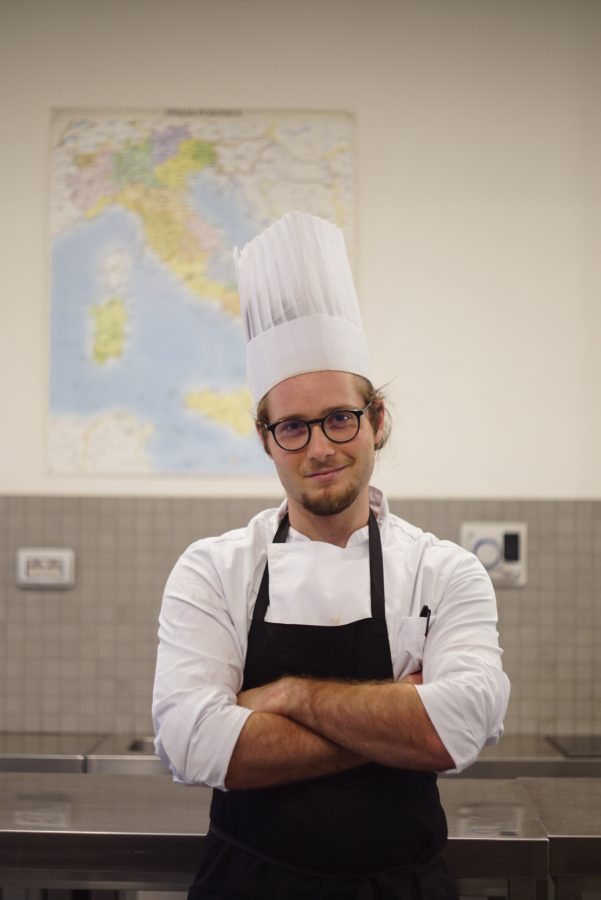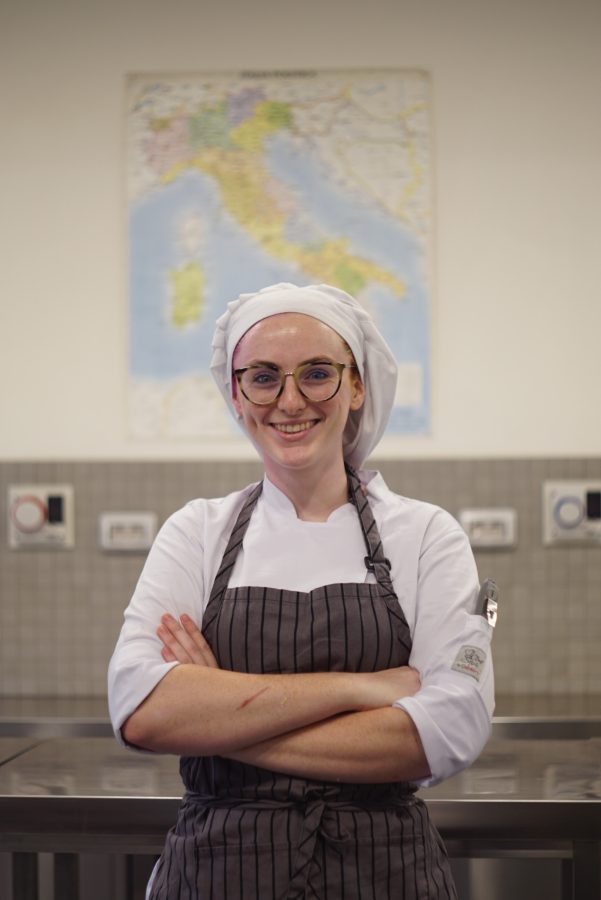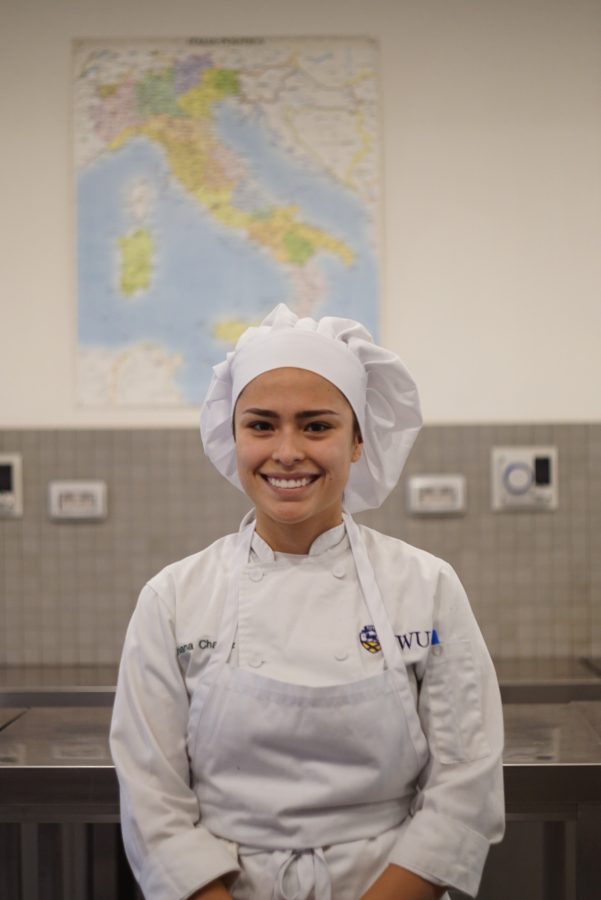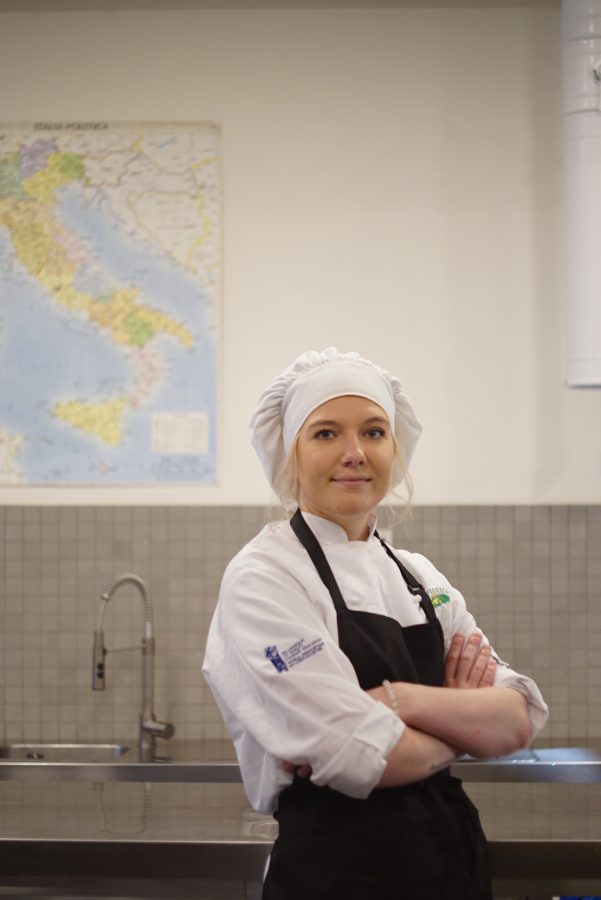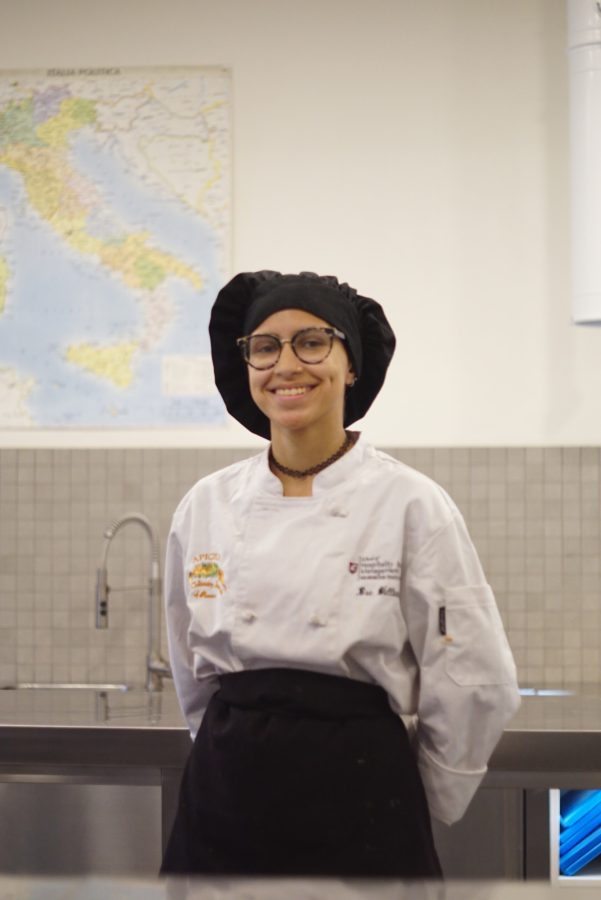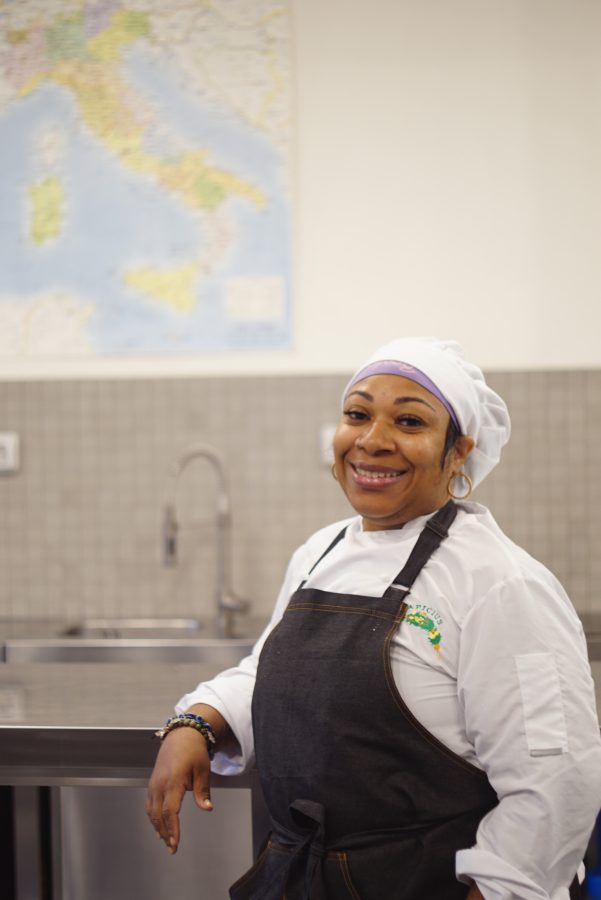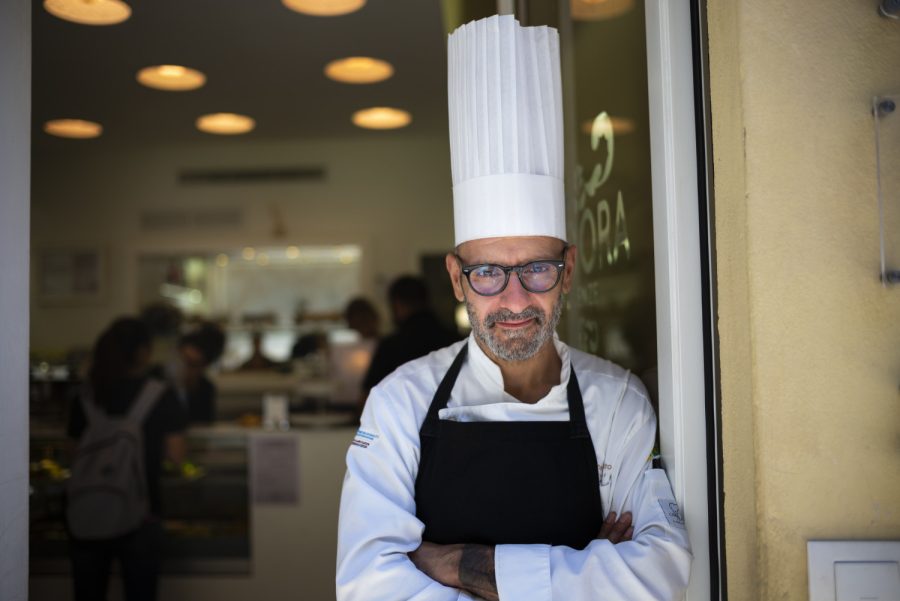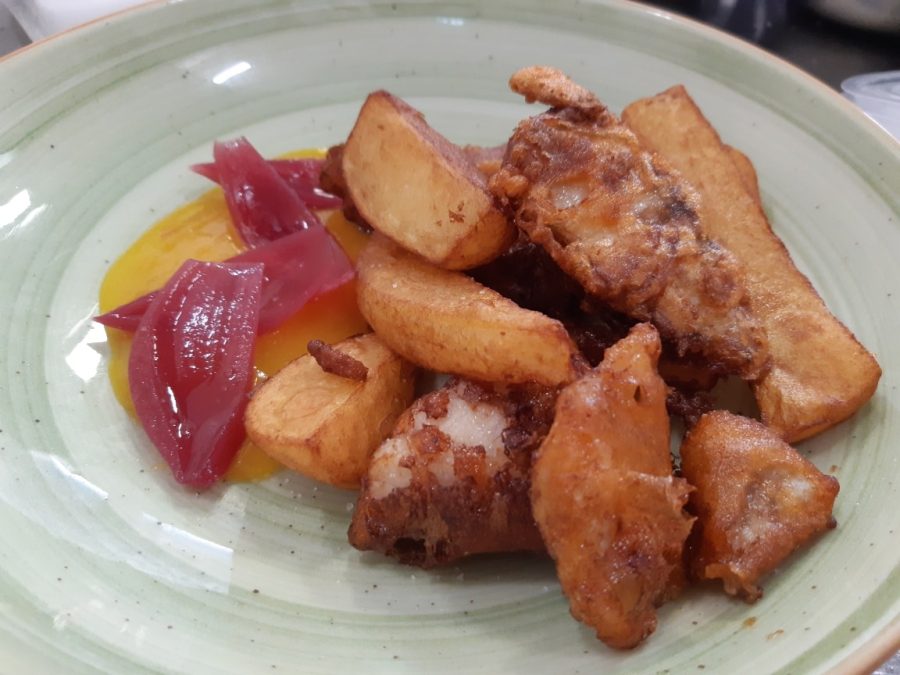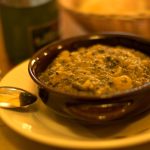written by Sarah Concagh, Caylie Cook, Delaney Johnston & Kaitlyn DeBello
Trattoria Sergio Gozzi is a traditional Tuscan restaurant located at Piazza di San Lorenzo, 8R, 50123 Firenze, FI right next to the Basilica San Lorenzo. The atmosphere was traditional and authentic with simple table settings and a rustic design. Looking around the room, the clientele was filled with local Italians enjoying a lunch break and a couple of tourists who had heard the great reviews.
There was room for approximately 50 guests with tables in close quarters to each other. The restaurant has a more old-school approach and does not offer reservations. Unlike most restaurants we’ve been to in Florence, they are only open 12:00 – 3:00 pm from Monday through Saturday. They are not a restaurant that serves dinner. We got there right at opening at 12 and a line soon formed outside the restaurant after we were seated. The menu was handwritten reflecting local products and seasonal changes and was divided into antipasta, primi piatti, secondi piatti, and dolci. Some of the local Tuscan dishes that were featured on the menu were crostini, lingua, trippa alla florentina, lampredotto con patate, and bistecca Fiorentina.
Primi Piatti
For the first course, we got the tortelli mushrooms and truffle cream. This dish is a common pasta dish in Italy. The mushrooms and the truffle complement each other in this dish, creating a very tasty experience. The mushrooms were chopped finely and placed in the truffle cream. We have had a lot of truffle dishes while being in Italy, so we weren’t too excited for this pasta, but it ended up being one of our favorite dishes from the lunch. The second pasta dish we got was fischiotti strascicati which was ziti pasta with a tomato meat sauce. This dish was simple but very good. It was a nice cleanser compared to the other two heavy dishes that we ate.
Secondi Piatti
For the second course, we got the Peposo, which is a specialty dish that this restaurant is known for. This dish is a beef stew with lots of black pepper and wine. Our server told us the legend that Filippo Brunelleschi made the dish on his construction site to prevent workers from leaving the for lunch. We had yet to try this dish and were initially nervous to try it. Group member, Delaney encouraged us to try it, and the rest of us soon agreed. Despite our initial hesitation, this became Sarah and Delaney’s favorite dish of the meal. The meat was cooked perfectly, and you could really taste the hints of wine in the sauce.
I Dolci
For dessert, we ordered the zuccotto. This is a traditional Florentine dessert. As a group, we had never seen this before on a menu and were excited to try this. Zuccotto is a dome-shaped dessert often made with sheet cake or sometimes lady fingers. Then it is filled with a ricotta cheese filling. The cake is soaked in amaretto or other almond-flavored liqueurs. We enjoyed this dish a lot. It was sweet, but not too sweet, and the liquor added a nice taste. It was very soft but had a nice texture and was cold. There was a chocolate sauce on the inside. Typically, we don’t get a dessert at the restaurant for lunch, so this was a treat, and we were very happy that it was such a pleasant dessert to try.
Cost Summary
The average meal would probably be 1 primi piatti, 1 secondi piatti, and a dessert. At this restaurant, the average price for a primi piatti is 12 euro. The average price for a secondi piatti is 13.75 euro. And the average price for the desert course is 5 euro. So if you add them all up, it would cost you 30.75 euro for an average meal without drinks. We ended up splitting all four items so it was a lot cheaper and we got to try more.
Conclusion
Overall, the dining experience here was fantastic. From the moment we arrived to the restaurant to when we left, we were given high-quality service. When we arrived, we were seated promptly. We received traditional Tuscan bread within a minute of being seated, which we had seen being freshly cut when we walked through the doors of the restaurant. Our dishes came out quickly, but in no way lacked any quality. Our server was also very welcoming and invited us for a kitchen tour once we finished our meal. Each of our courses was fresh and well prepared. At the end of our meal, once we got up to pay and leave, the restaurant staff’s excellent service was shown again by a staff member helping group member Katie put on her jacket. As we left, the staff said goodbye to us as well. This restaurant truly exhibited the idea of family-style traditional dining in Florence. It brought about a homey feel, and we all felt very welcomed by the staff.
